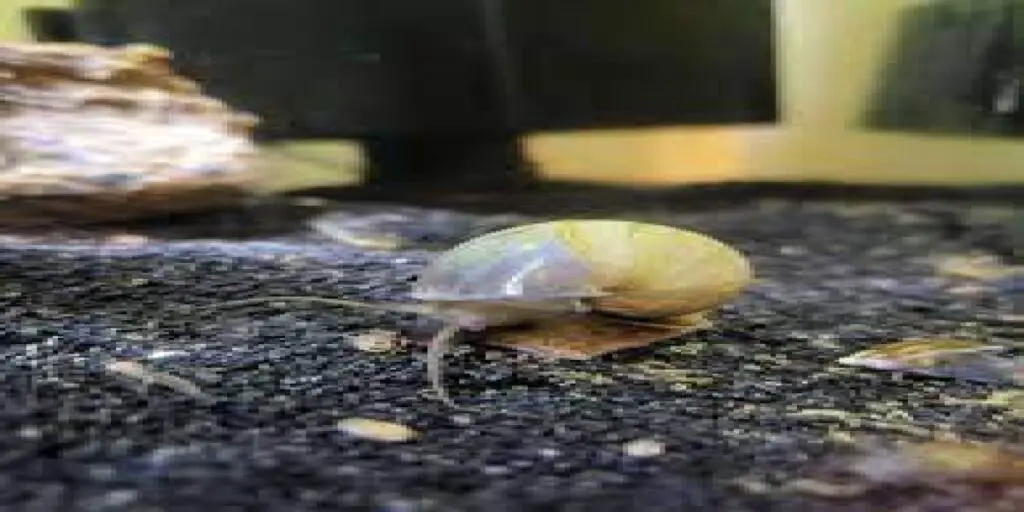Discover why Mystery Snail Shell Turning White and learn effective treatments. Keep your snails healthy and vibrant.

Mystery snails are captivating creatures, often cherished in freshwater aquariums for their unique personalities and striking appearance. However, like any living organism, they are not immune to health issues, and one common concern among mystery snail enthusiasts is shell erosion. If you’ve noticed your mystery snail’s shell turning white, it’s crucial to act swiftly to address the issue and ensure your beloved snail remains healthy and vibrant.
Understanding Mystery Snail Shell Erosion
Mystery snail shell erosion is a condition where the snail’s shell begins to deteriorate, resulting in thinning and discoloration. This ailment can stem from various factors, including calcium deficiency, poor water quality, and an inadequate diet.
Spotting the Symptoms
The primary indication of mystery snail shell erosion is a noticeable change in the color and texture of the shell. You may observe it becoming thin, brittle, and discolored. In severe cases, the shell might develop holes or cracks.
Unveiling the Culprits Behind Shell Erosion
- Calcium Deficiency: Mystery snails require calcium to maintain strong, healthy shells. When the aquarium’s water lacks sufficient calcium, these snails can begin losing calcium from their shells, leading to erosion.
- Poor Water Quality: The quality of the water in your aquarium plays a vital role in the health of your mystery snails. Water with high levels of ammonia or nitrates can irritate the snail’s mantle, the organ responsible for shell production. This irritation can contribute to shell erosion.
- Dietary Issues: Mystery snails need a varied and well-balanced diet to stay healthy. Calcium-rich foods such as cuttlebone and crushed eggshells are essential for their shell development. A poor diet lacking these vital nutrients can exacerbate shell erosion.
Treating Mystery Snail Shell Erosion
Thankfully, you can take several steps to treat mystery snail shell erosion and improve your snail’s condition:
- Add Calcium to the Water: Supplementing your aquarium’s water with calcium is crucial. You can use commercial calcium supplements designed for aquarium use or place pieces of cuttlebone or crushed eggshells in the tank. This provides a readily available source of calcium for your snails.
- Enhance Water Quality: Regularly maintain your aquarium’s water quality by ensuring it is clean and well-filtered. Consistent water changes help remove harmful toxins and maintain optimal conditions for your snails.
- Provide a Balanced Diet: Adjust your snail’s diet to include calcium-rich foods like cuttlebone, crushed coral, and pieces of eggshell. Ensure they also receive a variety of vegetables and algae wafers for a well-rounded nutrition.
- Address Underlying Health Issues: If your mystery snail has any underlying health conditions, such as a bacterial infection, it’s essential to address these issues simultaneously. Consult with a vet or experienced aquarist for guidance.
Preventing Mystery Snail Shell Erosion
Prevention is often the best medicine. To safeguard your mystery snails from shell erosion, follow these proactive measures:
- Maintain Proper Water Parameters: Regularly monitor and adjust your aquarium’s water parameters. Aim for a pH level between 7.0 and 8.0 and ensure water hardness is adequate to support healthy shell development.
- Offer a Balanced Diet: Continuously provide your mystery snails with a diverse diet that includes vegetables, algae wafers, and calcium-rich foods like cuttlebone or crushed eggshells.
- Monitor Water Quality: Regularly test your aquarium’s water for ammonia, nitrites, and nitrates. Implement effective filtration systems and perform routine water changes to keep these levels within a safe range.
- Avoid Overcrowding: Ensure your aquarium is appropriately sized for the number of snails you house to prevent overcrowding, which can lead to poor water quality.
- Maintain a Clean Tank: Regularly vacuum debris and waste from the tank substrate to prevent the buildup of harmful bacteria and algae that can harm your snails.
- Provide Hiding Places: Offer hiding spots in the aquarium, such as caves or plants, to help your mystery snails feel secure and reduce stress.
- Quarantine New Additions: When introducing new snails or plants to your aquarium, quarantine them separately for a few weeks to ensure they are free from diseases or parasites that could harm your existing snails.
- Regular Observation: Make it a habit to observe your mystery snails regularly. Any signs of shell erosion or changes in behavior should be addressed promptly.
By incorporating these preventative measures into your mystery snail care routine, you can significantly reduce the risk of shell erosion and contribute to the overall well-being of your snails.
You May Also Like:
- Reasons Behind Mystery Snail Has Not Moved In Day
- Kuhli Loach Eat Snails
- Aquarium Snail Waste As Fertilizer
Conclusion
Mystery snail shell erosion is a concern for aquarium enthusiasts, but with proper care, it can be managed and prevented. Your dedication to understanding and meeting your snail’s specific needs is key to ensuring they thrive in their freshwater habitat with vibrant and healthy shells.
To continue your journey into the world of aquarium snails, explore our blog for more in-depth articles on snail care, aquatic ecosystems, and creating a thriving underwater world. Your commitment to providing the best care for your aquatic friends is commendable, and we’re here to support you every step of the way. Together, we can delve deeper into the fascinating world of underwater wonders!